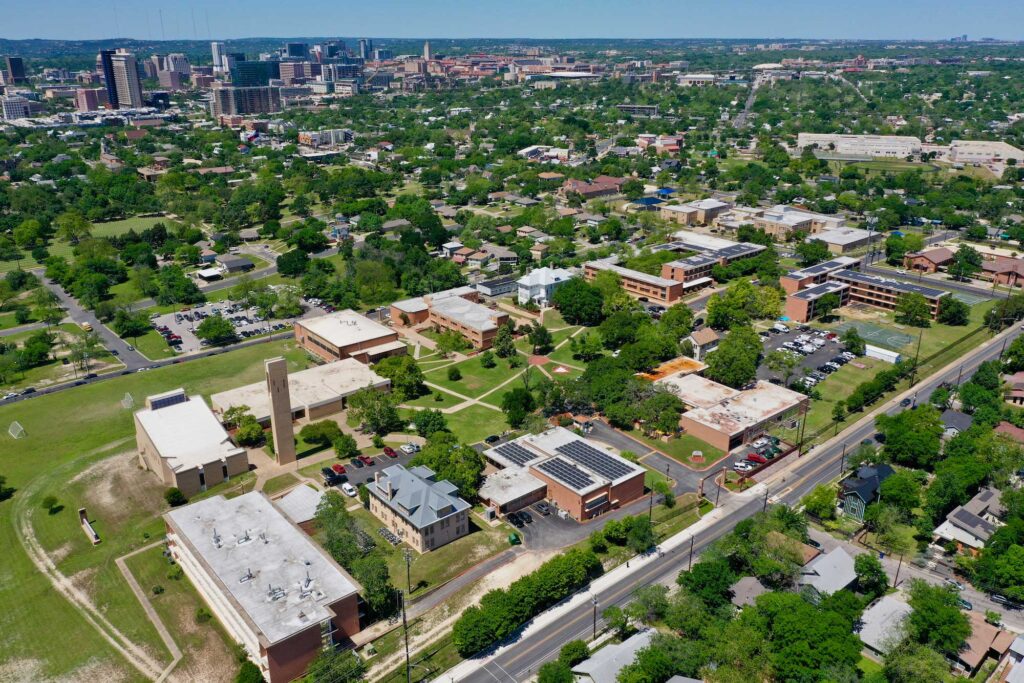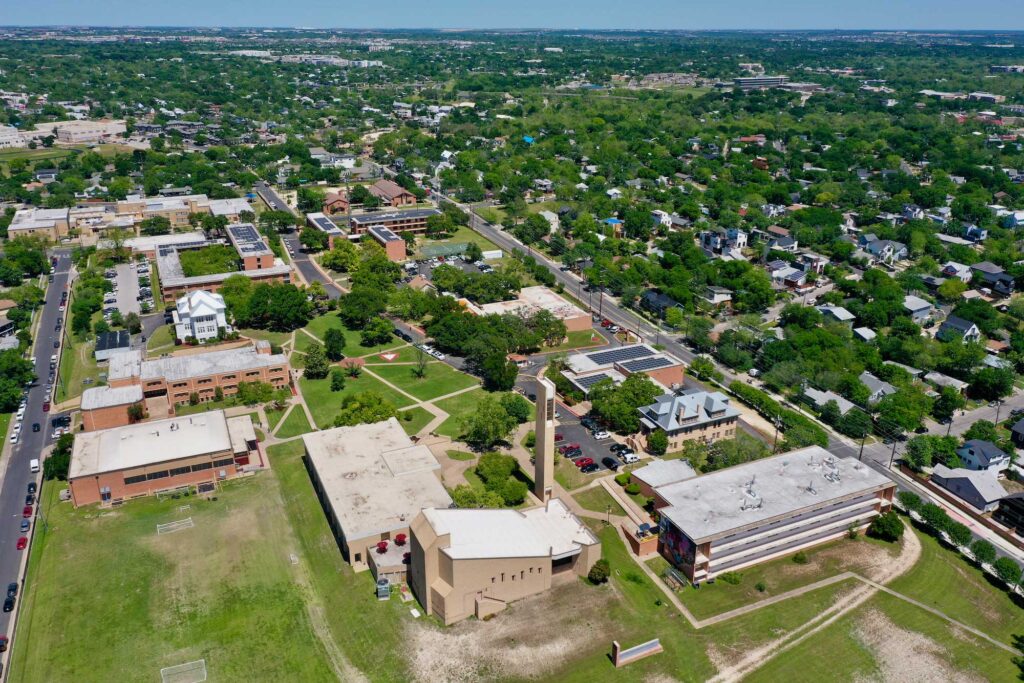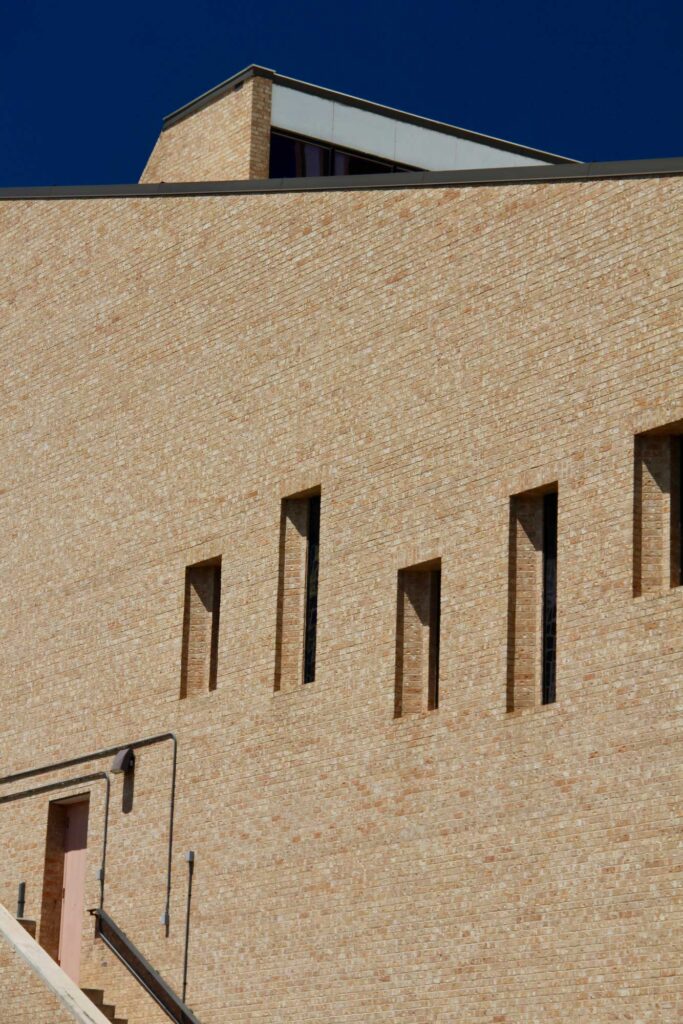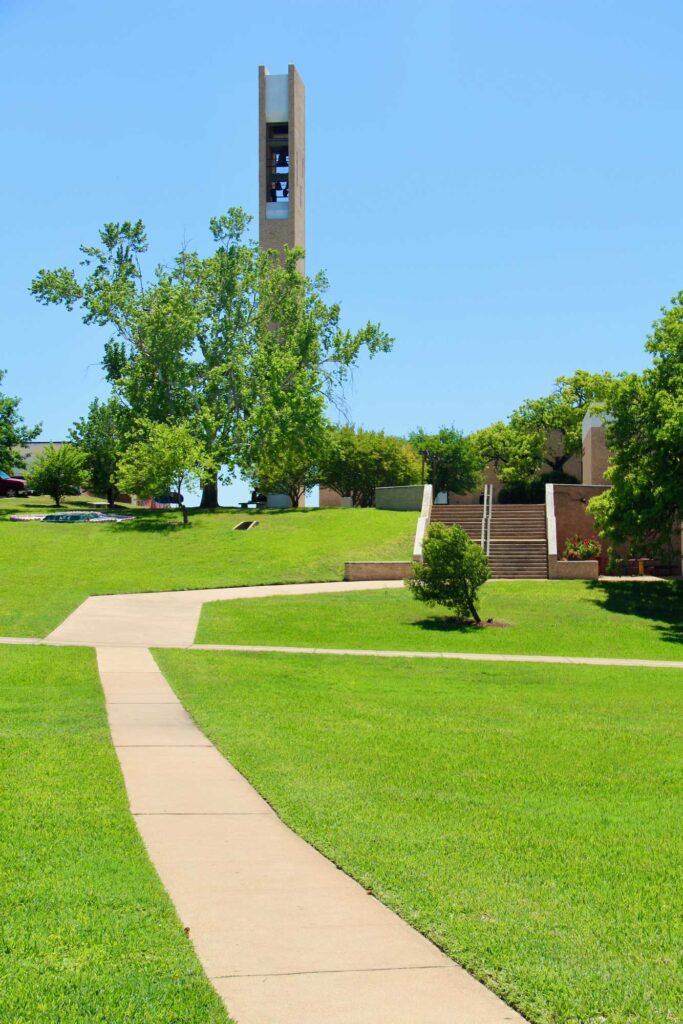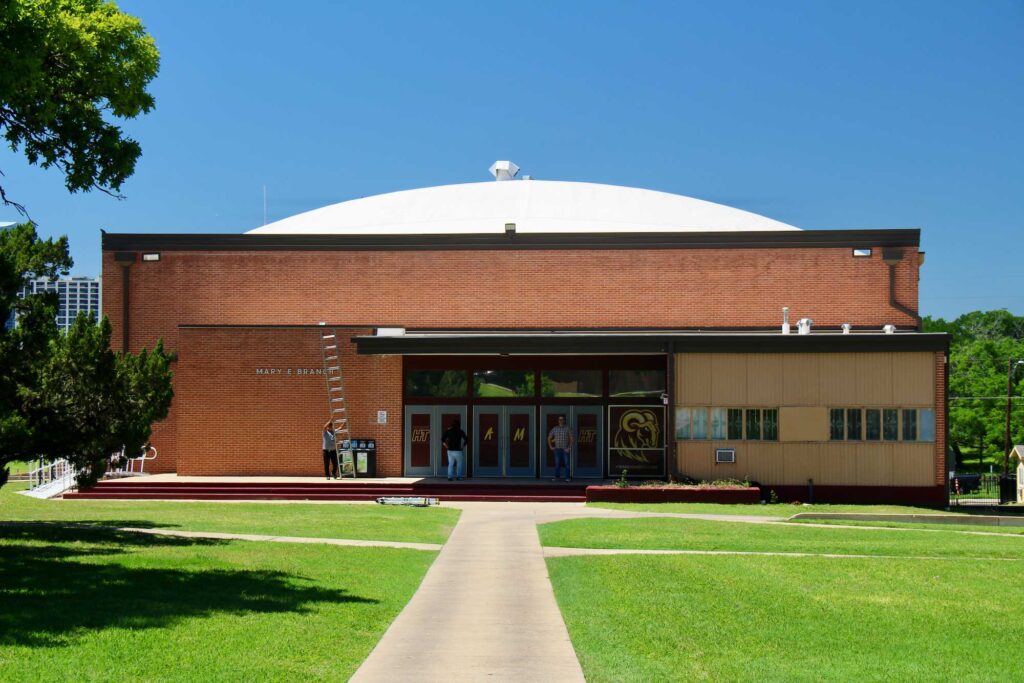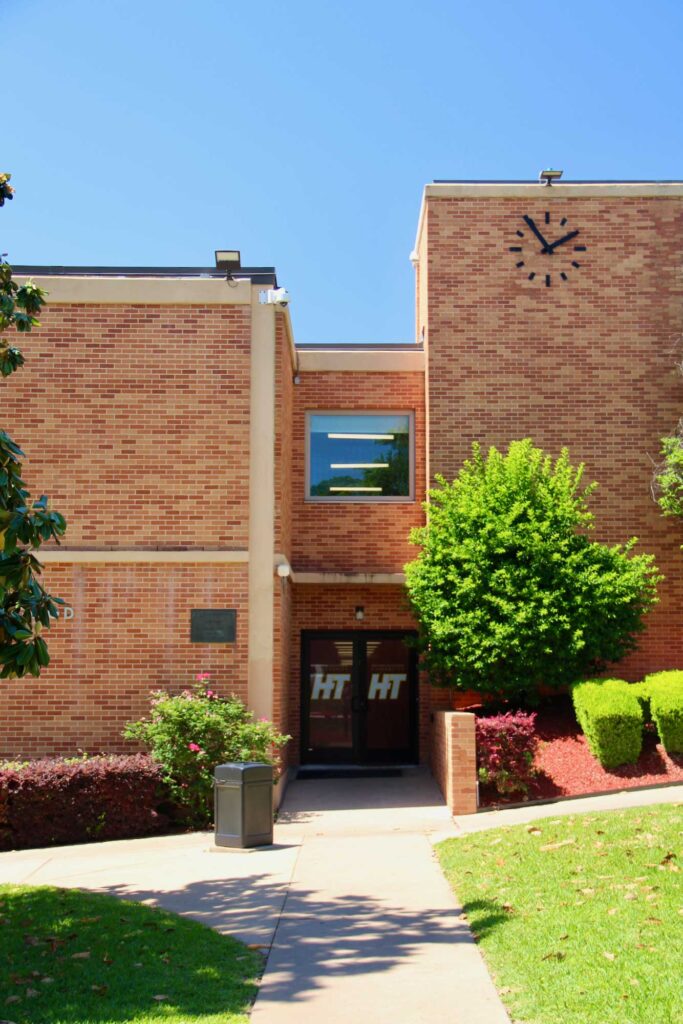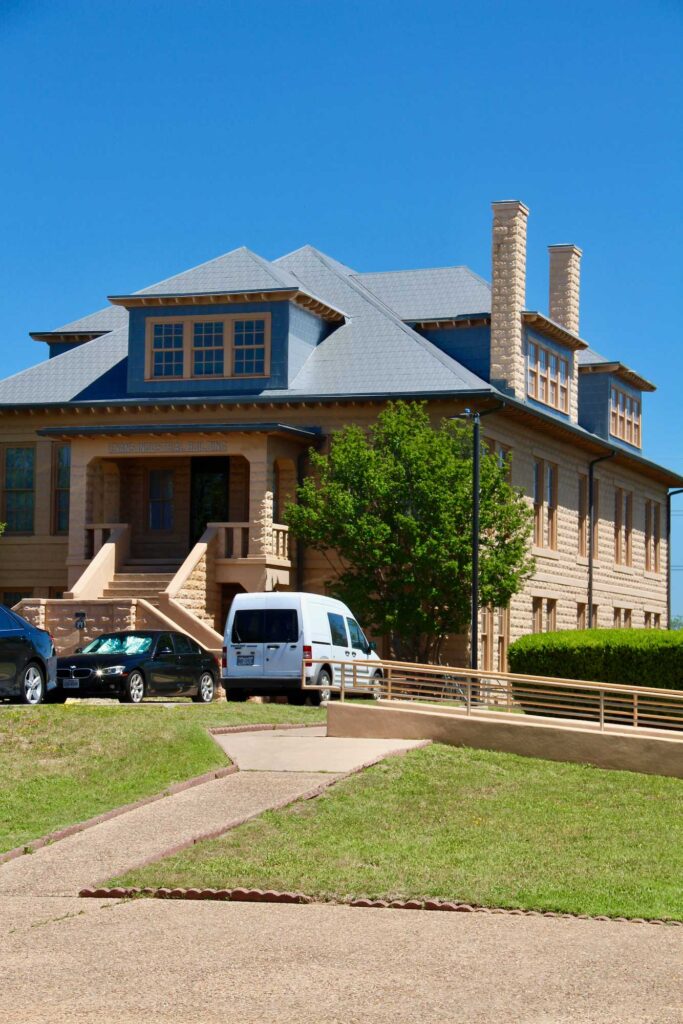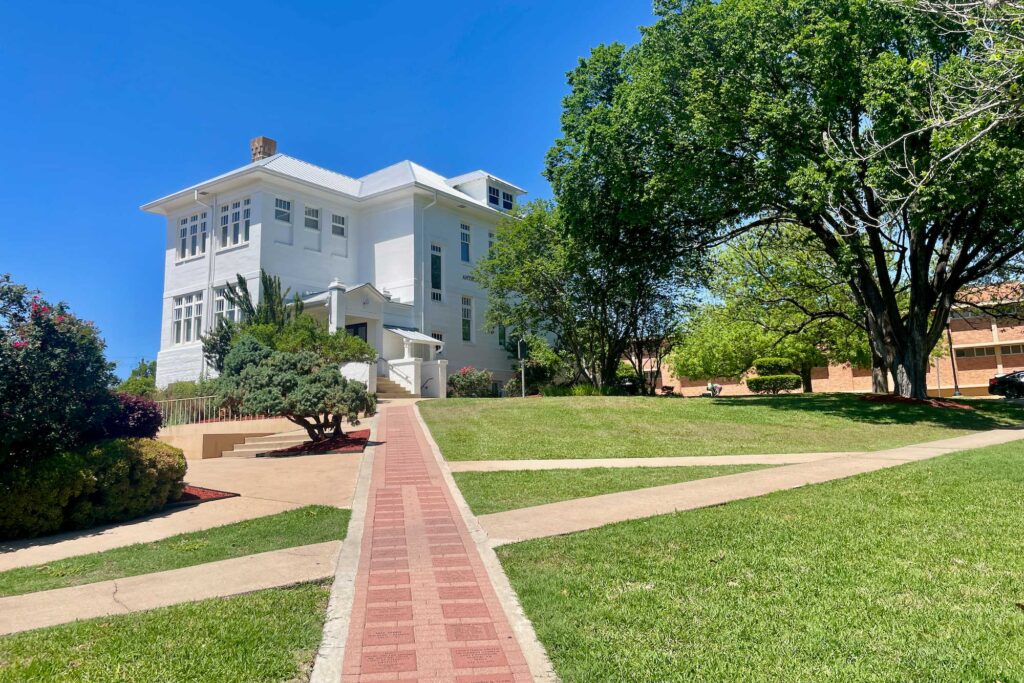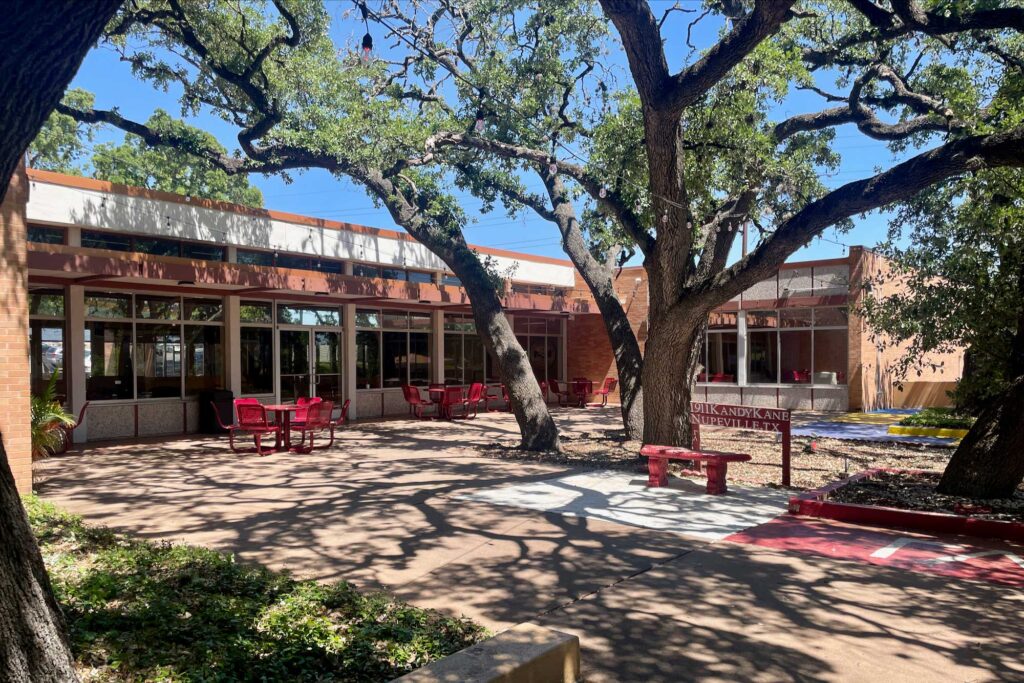Huston-Tillotson University is the result of a merger between two historic, religiously affiliated institutions with a shared mission to provide an education to freedmen in the years following the Civil War. Tillotson College and Normal Institute have roots in 1875, and Samuel Huston College was founded in 1887. Both were located in East Austin due to the city’s segregationist 1928 Master Plan, which forced African American citizens and institutions to occupy a defined area. The two institutions merged into Huston-Tillotson College on October 24, 1952.
After the merger, the college lifted its restrictions on race but has continued to have primarily Black student enrollment. Many of the most influential people in East Austin attended Huston-Tillotson University: Dr. Herman A. Barnett III was the first African American born in Texas to become a licensed doctor, and other alumni included civil rights activists, local and national government officials, ministers, and educators.
Today’s campus was founded in a prominent area in East Austin known as Bluebonnet Hill. By 1966 the campus had grown to 19 acres and included residence halls, a student union, gym, and multiple classroom buildings. In the 1970s the campus underwent another phase of growth with a new chapel and administration building as well as other building renovations.
One of the most notable buildings on campus is the Anthony and Louise Viaer Alumni Hall. It was built in 1914 and listed on the National Register of Historic Places in 1993. The hall was built from concrete blocks that were fabricated by Tillotson College students. The brick is covered in white plaster, which makes the structure stand out among the larger buildings that surround it. The hall was designed in the Prairie Style (perhaps the best-preserved example in Austin), which can be seen in the rectangular mullion pattern of the windows, the understated adornment, and the overall emphasis on geometric forms. Originally an administrative office, the building was renovated in 2004 and reopened as an alumni center.
Another notable building on campus is the King-Seabrook Chapel (1974), designed in the Brutalist style that was popular for institutional buildings at the time. The chapel features large, sloped masses of brick accented by window and door openings that are subtracted from those masses via angular cuts. Visible from the entire campus and the surrounding neighborhood, the soaring brick bell tower announces the presence of the university both visually and aurally. – Albert Condarco, AIA, NOMA
